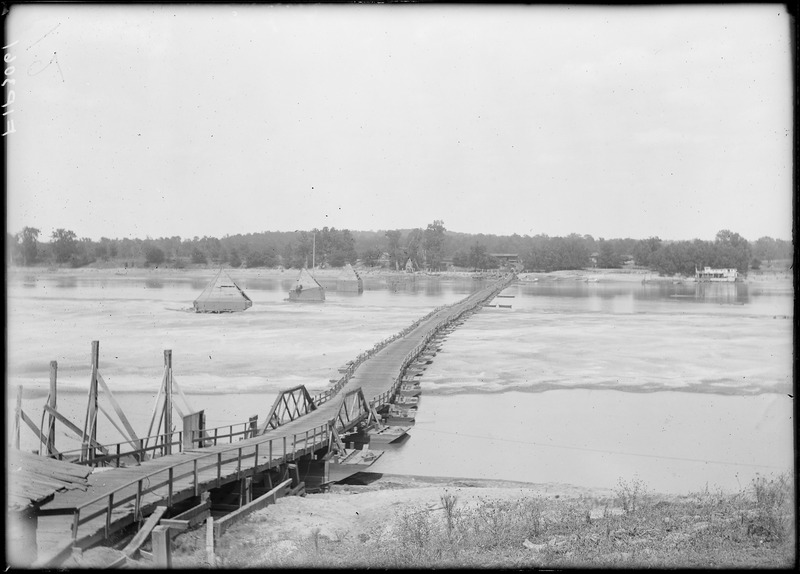
















http://www.popcliq.com (web development), GoPermaculture Food Forest http://www.permies.com/t/57687/forest-garden/Permaculture-Food-Forest-suburban-permaculture, Sea Buckthorn (Seaberry) grower (hobbiest) https://www.facebook.com/michelle.bisson.37, zone 3b/4b (borderline) Quebec Canada
 1
1




Invasive plants are Earth's way of insisting we notice her medicines. Stephen Herrod Buhner
Everyone learns what works by learning what doesn't work. Stephen Herrod Buhner












Anne Miller wrote:
You will need to strip the bark off. You would want to make a "L" shape notch at the end of the logs you will be joining together then use a metal straps to secure them together. Does this make since?
Before completing the top of the bridge you would need to anchor your poles to the ground. Maybe a post on either side of the pole in concrete.




Casie Becker wrote:Understand this is from a person with no experience in this, but what about a series of platforms that float on the creeks surface? It might even be possible to design it so that in a flood event there's a controlled break so that the whole assembly would swing to the side for easy retrieving and reinstalling. I don't know, it might be crazy, but it's still better than my first thought of a ferry.
 That would be great except the creek doesn't always have water in it or it is very low. I'm grinning at the idea of a ferry. Maybe I could build a flying car that operates on pullies to move back and forth ... but then I'm not sure how the goats would work with that. Lol.
That would be great except the creek doesn't always have water in it or it is very low. I'm grinning at the idea of a ferry. Maybe I could build a flying car that operates on pullies to move back and forth ... but then I'm not sure how the goats would work with that. Lol.  2
2




 1
1





http://www.popcliq.com (web development), GoPermaculture Food Forest http://www.permies.com/t/57687/forest-garden/Permaculture-Food-Forest-suburban-permaculture, Sea Buckthorn (Seaberry) grower (hobbiest) https://www.facebook.com/michelle.bisson.37, zone 3b/4b (borderline) Quebec Canada




Kyrt Ryder wrote:Actually, it occurs to me that at that span a rope/cable bridge is not unreasonable if the right types of sturdy trees are available on either side of the creek.




E Cochran wrote:
Kyrt Ryder wrote:Actually, it occurs to me that at that span a rope/cable bridge is not unreasonable if the right types of sturdy trees are available on either side of the creek.
We do have sturdy trees on both sides so I'll look into that, too. It would probably be easier to replace if we had high waters or could even be made to be lifted during flood periods so it doesn't wash away? Any good sources for building one?




E Cochran wrote: Yes, I understand the concept. Thank you! Will this kind of joining be strong enough for a people bridge? Does it need reinforced by more structure? How big of diameter are you thinking? Would you lay the "L" notch sideways? Are you talking metal straps as in rings that can be cinched down or rigid metal bars?
I was considering putting in a concrete buttress(?) ... like a low concrete footing with anchors to attach the poles. Posts would be good too though. I'll want handrails.
Invasive plants are Earth's way of insisting we notice her medicines. Stephen Herrod Buhner
Everyone learns what works by learning what doesn't work. Stephen Herrod Buhner




 1
1




 2
2




Invasive plants are Earth's way of insisting we notice her medicines. Stephen Herrod Buhner
Everyone learns what works by learning what doesn't work. Stephen Herrod Buhner




Miles Flansburg wrote:
And the one I was looking for!




Anne Miller wrote:Miles, those are really interesting links!
Here are some permies links with some bridges others here have built. I thought the pictures were interesting.




Invasive plants are Earth's way of insisting we notice her medicines. Stephen Herrod Buhner
Everyone learns what works by learning what doesn't work. Stephen Herrod Buhner












Glenn Herbert wrote:The curved arch Chinese bridge is a very cool design though I wonder how you would get the parts in place without being able to support them in the middle of the creek during construction.
I am curious to know how you can have a creek 25' wide and 12' or more deep; the banks must be extremely steep and I would think must be rocky to maintain the slope. The potential violence of floods is a major consideration in how high and strong you need to make a bridge. Is there any chance that trees could be carried downstream in floods? That increases clearance issues.
A cable suspension bridge may be the most practical if you have strong trees close enough to the banks, or can build piers or supports to make the clear span close to the banks while anchoring to the trees.




Casie Becker wrote:I couldn't think of the correct name for it, but that's how most of the lake businesses function on Lake Travis. Since there can easily be a 30 foot difference in water depth during a year.
Poking around, there are tones of DIY instructions online for floating docks, which made narrow and laid end to end would fit my idea of a bridge. Attach ramps on pivots or hinges at each end and it would raise and lower itself with the water level. Just remember to make the ramp long enough to not be too steep at the lowest level. Your handrails supports could be attached to the side of each platform.




http://www.popcliq.com (web development), GoPermaculture Food Forest http://www.permies.com/t/57687/forest-garden/Permaculture-Food-Forest-suburban-permaculture, Sea Buckthorn (Seaberry) grower (hobbiest) https://www.facebook.com/michelle.bisson.37, zone 3b/4b (borderline) Quebec Canada








http://www.popcliq.com (web development), GoPermaculture Food Forest http://www.permies.com/t/57687/forest-garden/Permaculture-Food-Forest-suburban-permaculture, Sea Buckthorn (Seaberry) grower (hobbiest) https://www.facebook.com/michelle.bisson.37, zone 3b/4b (borderline) Quebec Canada














http://www.popcliq.com (web development), GoPermaculture Food Forest http://www.permies.com/t/57687/forest-garden/Permaculture-Food-Forest-suburban-permaculture, Sea Buckthorn (Seaberry) grower (hobbiest) https://www.facebook.com/michelle.bisson.37, zone 3b/4b (borderline) Quebec Canada





|
She's out of the country right now, toppling an unauthorized dictatorship. Please leave a message with this tiny ad:
Rocket Mass Heater Resources Wiki
https://permies.com/w/rmh-resources
|




